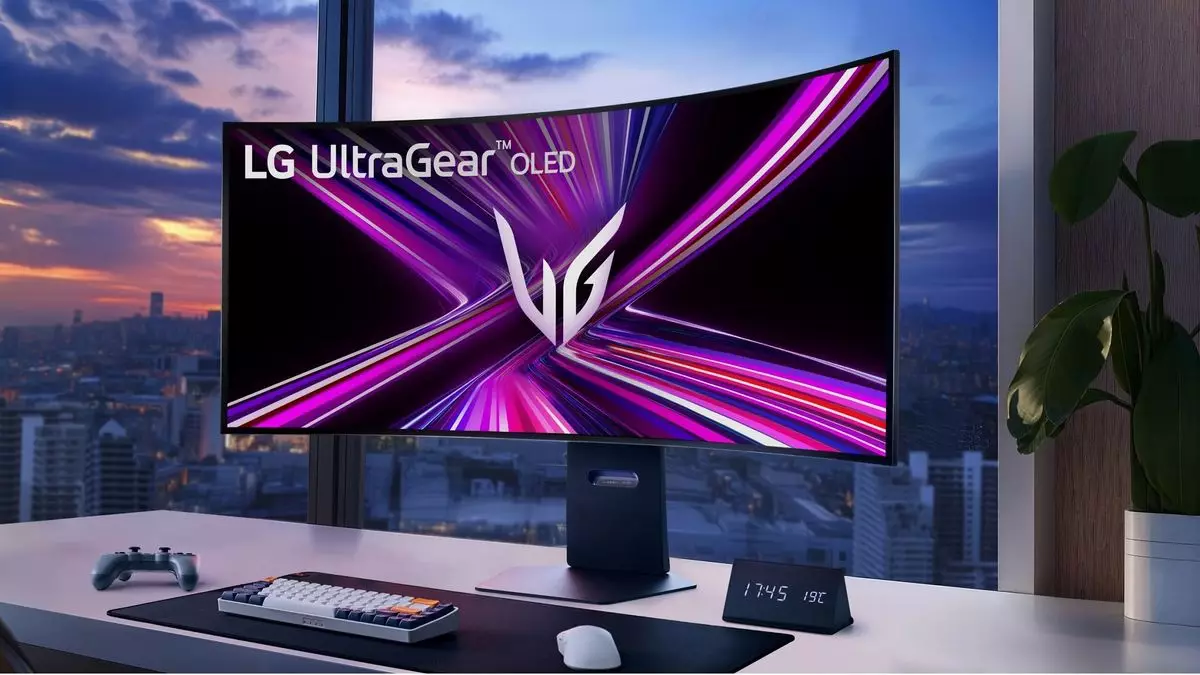Recent insights from LG have revealed a striking shift in the landscape of the gaming monitor market: over 22% of all PC gaming monitors sold are now using OLED technology. This figure marks an impressive milestone, especially when considering that OLED panels have only been on the market for roughly two years in the context of gaming monitors. In stark contrast, the adoption of OLED for televisions has been slower, with a current market share of only 18%, despite LG releasing its first OLED TVs nearly a decade ago. This disparity raises an intriguing question about the driving forces behind the accelerated acceptance of OLED in PC gaming compared to the more gradual uptake seen in home entertainment.
The first instance of an OLED gaming monitor can be traced back to Alienware’s 34 AW3423DW, which ventured into the competitive market almost three years ago, paving the way for subsequent models, including LG’s entries. The rapid rise in OLED adoption among gamers can primarily be attributed to the technology’s superior visual performance, offering unmatched contrast, vibrant colors, and quick response times that are pivotal for gaming. Gamers, always on the lookout for enhancements that provide them with a competitive edge, are quickly recognizing the advantages that OLED panels have over traditional LCD displays, despite the elevated pricing.
This leads us to the curious juxtaposition of preference and price. OLED monitors, commonly starting around $600 for a 27-inch 1440p model, seem to cater to a marketplace that, arguably, should be niche due to these costs. When considering larger and higher-resolution models, the price typically exceeds $800, with some high-end units cresting the $1,000 mark. Such pricing can appear daunting, especially when compared to LCD monitors—which can be procured at a fraction of the price—the question arises: What compels gamers to invest in OLED despite the high costs?
The question of pricing remains crucial in understanding the OLED monitor landscape. While OLED technology is often celebrated for its premium display quality, the cost associated with it has traditionally put it out of reach for the average consumer. Initial releases saw entry-level OLED monitors priced similarly to mid-range 4K OLED TVs, which bewildered potential buyers and cast a shadow over the technology’s accessibility. Gradual price reductions have been witnessed in the past few years; however, a significant price gap still exists between entry-level OLED monitors and their LCD counterparts.
From the standpoint of the average consumer, the purchasing decision boils down to price versus performance. An LCD-based monitor costing around $200 will suffice for many gamers, while more demanding enthusiasts might justify spending over $800 for an OLED. One can argue that as more options flood the market, competition may drive prices down further, enabling broader access to OLED’s rich gaming experience. Yet, the current price point still limits mainstream adoption, making it reminiscent of luxury brands catering to an affluent clientele rather than a universally accessible technology.
Fortunately, advancements in OLED technology may ease some of these pricing concerns in the foreseeable future. Recent announcements at CES regarding new enhancements from LG and Samsung suggest a potential leap in full-screen brightness, with claims of achieving as much as 400 nits. This breakthrough could revolutionize the perception of OLED in gaming as it aims to resolve one of the significant criticisms against the technology—brightness levels. If the anticipated models deliver improved brightness without exorbitant price hikes, we might be on the brink of a renewed surge in OLED adoption.
Reflecting on the potential trajectory of OLED pricing, some experts predict that within the next couple of years, sub-$500 models capable of high-end performance will no longer be a distant dream. However, ambitious models, such as LG’s latest 5K2K Ultragear 45GX950A priced at $2,000, may continue to languish outside the reach of average consumers. This juxtaposition illustrates the ongoing struggle between high-end innovation and affordability that characterizes the technology sector.
OLED monitors are swiftly cementing their position in the PC gaming market, with the impressive growth of market share speaking volumes about their acceptance. The potential for price reductions and technological improvements heralds a future where OLED could see wider adoption, appealing to both dedicated gamers and casual users alike. Only time will tell if OLED panels can escape the realm of luxury to become the standard choice for gaming monitors, but the upward trajectory is undoubtedly promising. As developers and manufacturers navigate this exciting terrain, the evolution of OLED technology will be a critical chapter in the ongoing narrative of how we experience gaming visuals.

